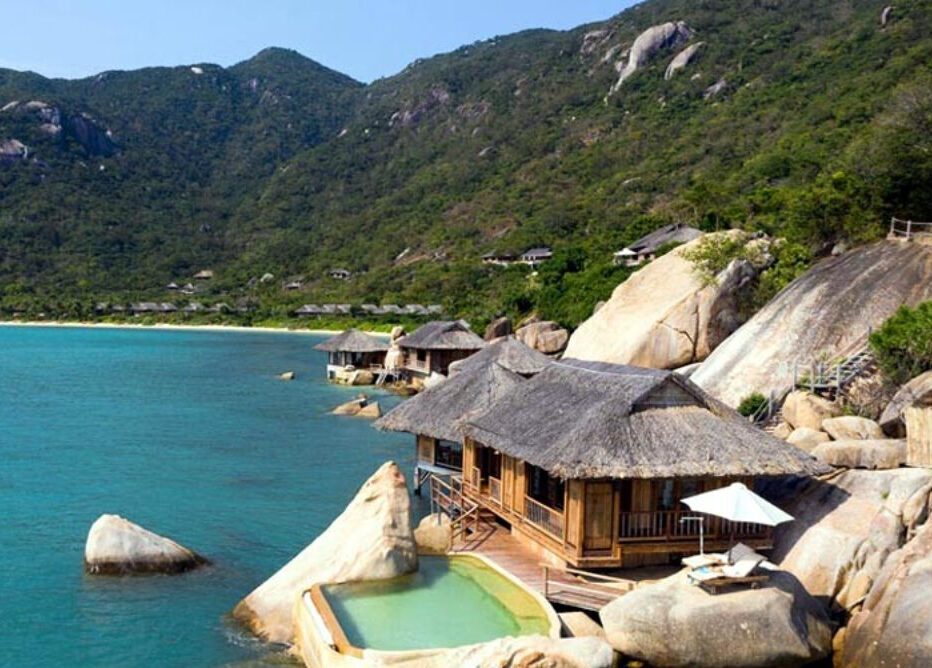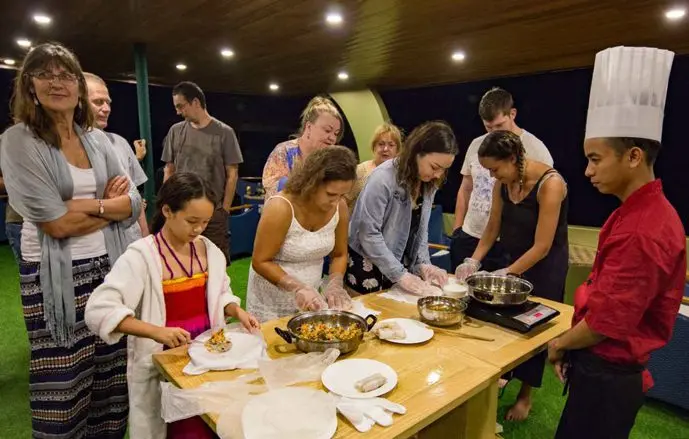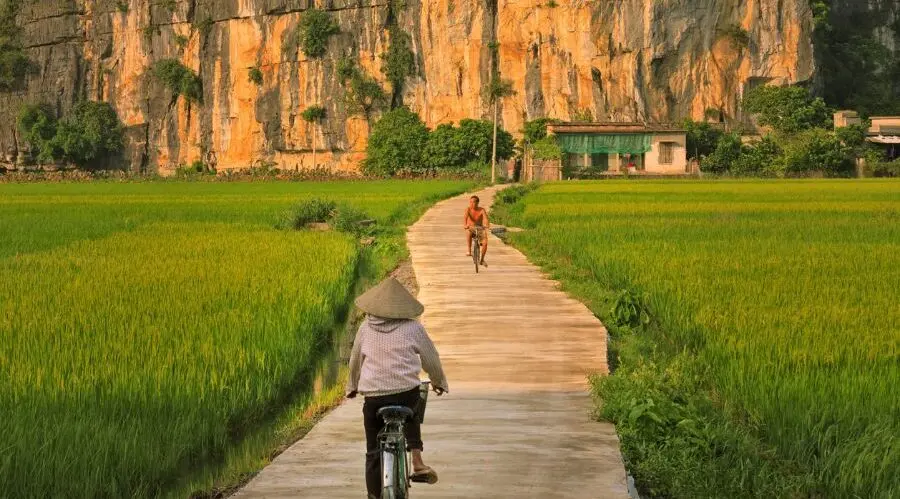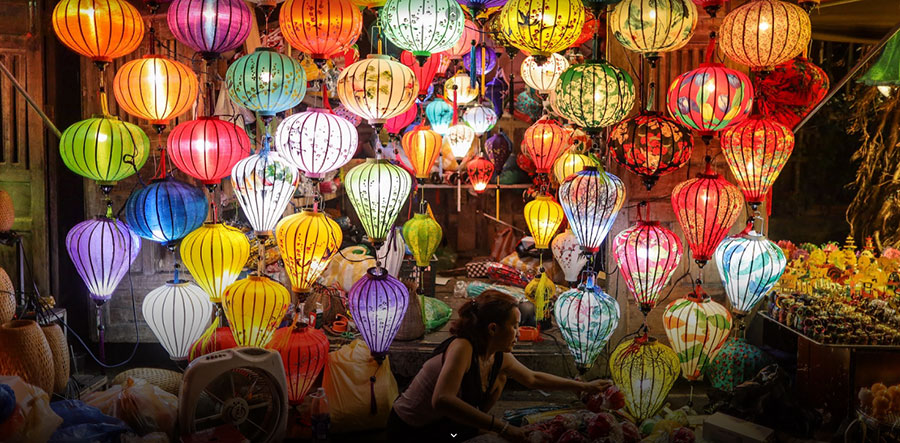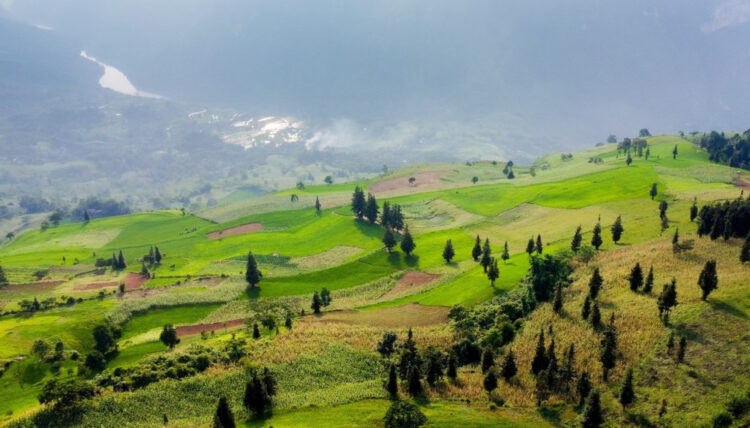Things You Need to Know Before Traveling to Vietnam
1.Visa & Entry Requirement
Visa-Free Entry
Vietnam offers visa exemptions for citizens of 25+ countries, including:
- Up to 45 days: UK, France, Germany, Italy, Spain, Japan, South Korea, Russia, and others
- Up to 30 days: ASEAN countries like Singapore, Thailand, Malaysia, and Indonesia…
Visa Options: Many nationalities can apply for an e-visa online, valid for 30 days. Others may qualify for visa-free entry or visa on arrival. check your eligibility before booking flights.
Passport Validity: Make sure your passport is valid for at least six months beyond your arrival date.
Visa on arrival (VOA):
Air Travelers Only: VOA is available only if you’re flying into Vietnam. It’s not valid for land or sea entry.
Pre-Approval Required: You must obtain a visa approval letter from a licensed Vietnamese travel agency before you arrive.
Important Notes
- Passport Validity: Must be valid for at least 6 months with 2 blank pages.
- Photos: Bring two passport-sized photos (4×6 cm, white background).
- Fees: There are two fees: service fee (paid online) and stamping fee (paid at the airport).
If you’re not in an emergency situation, Vietnam’s e-visa system is often simpler and more predictable.
E-visa:
You can apply for an e-visa online or get a tourist visa on arrival at a cost of US$25. These are valid for 30 days.
Vietnam Electronic Visa Portal will operate on two new domains: https://thithucdientu.gov.vn and https://evisa.gov.vn. Please visit these new addresses to submit your application and check the results.
Processing notes from traveler reports
Step 1: Fulfill required information:
- Upload foreigners’ passport data page image and photograph (straight looking without glasses);
- After this step, registration code will be sent to the applicant;
Step 2: Pay E-visa fee. Your application will be processed in 3 working days;
- – $25/single-entry electronic visa
- – $50/multiple-entry electronic visa
Step 3: Enter registration code, registration email and date of birth to check result in E-visa search menu. If being approved for E-visa, please print E-visa to enter/exit Vietnam.
* Note: If there is any missing or incorrect/unidentified information, your application will not be accepted.
Processing notes from traveler reports
- Applications submitted early (e.g. 2 – 3 weeks before arrival) may be delayed until closer to travel date
- Many have received approval in under 48 hours, and some within minutes/hours of contact.
2. Vietnam’s climate and travel season

Vietnam’s climate is as diverse as its landscapes – stretching from misty mountains in the north to tropical beaches in the south. To make the most of your trip, it helps to think of Vietnam as three distinct regions, each with its own weather patterns and ideal travel seasons:
Regional Climate Breakdown
Northern Vietnam (Hanoi, Ha Long Bay, Sapa)
- Spring (Mar – May): Mild and dry – perfect for trekking and sightseeing.
- Summer (Jun – Aug): Hot and humid with heavy rains; lush rice terraces in Sapa.
- Autumn (Sep – Nov): Cool, dry, and scenic – arguably the best time to visit.
- Winter (Dec – Feb): Cold and foggy, especially in the mountains; Sapa can even see frost.
Central Vietnam (Hue, Da Nang, Hoi An)
- Jan – Aug: Hot and dry, ideal for beach lovers.
- Sep – Nov: Rainy and prone to typhoons – travel with caution.
- Dec – Feb: Mild with occasional showers.
Southern Vietnam (Ho Chi Minh City, Mekong Delta, Phu Quoc)
- Nov – Apr: Dry season – sunny and warm, great for city tours and island hopping.
- May – Oct: Wet season – expect tropical downpours, especially in June –
Vietnam’s weather can be unpredictable, so it’s smart to pack layers, a raincoat, and sunscreen no matter when you go.
3. Clothing
Dressing for diverse climates, cultural respect, and comfort on the move. Whether you’re wandering ancient streets in Hanoi, trekking in Sapa, or lounging on Phu Quoc’s beaches, here’s how to dress smartly and stylishly
Essentials for All Regions
- Lightweight, breathable fabrics: Cotton, linen, and moisture-wicking materials are ideal for Vietnam’s heat and humidity.
- Modest attire: Especially important when visiting temples or rural areas. Avoid short shorts, low-cut tops, or sleeveless shirts in sacred spaces.
- Rain gear: A compact rain jacket or poncho is a must during monsoon season (May–October in the south, September–November in the center).
- Comfortable walking shoes: Streets can be uneven, so opt for sturdy sandals or sneakers.
Regional & Seasonal Tips
Northern Vietnam (Hanoi, Sapa, Ha Long Bay)
- Winter (Dec–Feb): Pack warm layers—sweaters, jackets, scarves. Sapa can drop to near freezing.
- Spring/Autumn (Mar–Apr, Sep–Nov): Light layers with a jacket for cool evenings.
- Summer (May–Aug): T-shirts, shorts, sunhat, and umbrella—hot and humid.
Central Vietnam (Hue, Da Nang, Hoi An)
- Dry Season (Jan–Aug): Beachwear, light dresses, and sun protection.
- Rainy Season (Sep–Nov): Quick-dry clothes and waterproof shoes.
Southern Vietnam (Ho Chi Minh City, Mekong Delta, Phu Quoc)
- Year-round warmth: Think tropical—tank tops, breathable pants, and flip-flops.
- Rainy Season (May–Oct): Add a raincoat and waterproof bag cover.
Must-Have Items
- 🧢 Sunhat or cap
- 😎 Sunglasses
- 🧴 Sunscreen & insect repellent
- 🧦 Compression socks (for long travel days)
- 🧘 Loose-fitting pants or maxi skirts (great for temple visits and hot days)
4. Money matters
Vietnamese Dong (VND): The official currency. Denominations range from ₫1,000 to ₫500,000, with all bills featuring Ho Chi Minh.
- No Coins: Coins are no longer in circulation – everything is done with banknotes.
- Millionaire Moment: With the exchange rate hovering around ₫25,800 – ₫26,000 per USD, you’ll be a “millionaire” with just $40 – $50.
Cash vs Card
- Cash Is King: Especially in local markets, street food stalls, and rural areas.
- Cards Accepted: Upscale restaurants, hotels, and malls often accept Visa/Mastercard, but don’t count on it everywhere.
- QR Payments Rising: Mobile apps like MoMo and ZaloPay are gaining traction—even street vendors now display QR codes.
ATMs & Withdrawals
- Widely Available: ATMs are easy to find in cities and tourist areas. Banks like Vietcombank, BIDV, Techcombank, and TPBank are reliable.
- Withdrawal Limits: Vary by bank—some cap at ₫2–₫5 million per transaction, others allow up to ₫20 million.
- Fees: Foreign cards may incur withdrawal fees, so check with your bank before traveling.
Currency Exchange Tips
- Best Places: Commercial banks like Vietcombank or BIDV offer fair rates and legal transactions.
- Airport Counters: Convenient but often less favorable rates.
- Gold Shops: Popular among locals for slightly better rates, but not always regulated.
- Bring Your Passport: Required for currency exchange at banks.
Smart Money Tips
- Carry Small Bills: Useful for taxis, tips, and street food. Keep ₫20,000 and ₫500,000 bills separate – they look similar!
- Check Bill Condition: Torn or worn bills may be rejected.
- Avoid USD Payments: While some tourist spots accept USD, it’s not legal tender – stick to dong.
5. Communications
Travelers can purchase pre-paid SIM cards, with the prices ranging from $5 to $10, at the airports or border checkpoints on arrival. Additional value can be bought to add money to the SIM card.
Mobile & Internet Connectivity
- Mobile Networks: Vietnam has excellent mobile coverage, especially in cities. Major providers include:
- Viettel
- MobiFone
- VinaPhone
- SIM Cards: Easy to purchase at airports, convenience stores, or mobile shops. You’ll need your passport to register.
- Data Plans: Affordable and fast. You can get unlimited data for under $10/month.
- Wi-Fi Access: Widely available in hotels, cafés, and restaurants. Speeds are decent in urban areas.
Vietnam ranks among the top countries in Asia for mobile phone usage and internet penetration
Free Wifi is available in most hotels, restaurants and cafes of major tourist cities. In the rural areas of the country, internet access is limited.
Tips: It is required to show your passport when buying pre-paid SIM cards.
Cultural Communication Tips
- Indirect Style: Vietnamese communication tends to be subtle and context-driven. People may avoid direct confrontation or saying “no” outright.
- Respect & Politeness: Age, status, and education influence how people speak. Use formal greetings and avoid overly casual language with elders.
- Non-Verbal Cues: Gestures, tone, and facial expressions carry weight. Smiling is common – even in disagreement.
Media & Broadcast
- TV & Radio: Government-controlled with national and regional stations. Satellite access is limited but available in some homes.
- Online News & Social Media: Facebook, YouTube, and TikTok are widely used. Zalo is the go-to app for local messaging and community updates.
6. Dining

Dining in Vietnam is an adventure for the senses – vibrant, flavorful, and deeply rooted in culture. Whether you’re slurping street-side noodles or savoring Michelin-worthy creations, here’s what makes Vietnam’s food scene unforgettable:
Street Food: The Soul of Vietnamese Cuisine
- Pho: Vietnam’s iconic noodle soup, best enjoyed in Hanoi for a northern-style broth or in Saigon for a sweeter southern twist.
- Bánh mì: A crispy baguette stuffed with meats, pickled veggies, and chili sauce—French colonial influence meets Vietnamese flair.
- Bún chả: Grilled pork with rice noodles and herbs, famously enjoyed by Obama in Hanoi.
- Egg Coffee: A Hanoi specialty—whipped egg yolk over strong Vietnamese coffee, creamy and rich.
You’ll often dine on tiny plastic stools, elbow-to-elbow with locals. It’s part of the charm.
Unique Dining Experiences
Here are some standout ways to eat your way through the country:
- Street food walking tours in Hanoi or Ho Chi Minh City
- Family dinners with ethnic minorities in Sapa
- Cooking classes in Hoi An
- Floating market breakfasts in the Mekong Delta
- Seafood BBQs on Phu Quoc’s beaches
- Dining in the dark at Noir in Saigon
These experiences go beyond food – they’re cultural immersions.
Dietary Options
- Vegetarian & Vegan: Easy to find, especially in Buddhist-influenced areas. Look for dishes like cơm chay (vegetarian rice) and bánh xèo made with mushrooms.
- Halal & Gluten-Free: Available in major cities, though less common in rural areas – plan ahead.
Tips for Dining Like a Local
- Eat where it’s busy: High turnover means fresh food.
- Don’t fear the plastic stool: It’s where the best meals happen.
- Learn basic food phrases: “Không cay” (not spicy), “Chay” (vegetarian), “Thêm nước mắm” (more fish sauce).
7. Safety
Vietnam is generally a safe and welcoming destination for travelers, but like anywhere, it pays to be informed and alert. Here’s a comprehensive guide to staying safe while exploring this vibrant country
Overall Safety
- Low Violent Crime: Vietnam has a low rate of violent crime. Most safety concerns involve petty theft, especially in crowded urban areas like Hanoi and Ho Chi Minh City.
- Tourist-Friendly: Tourism is a major industry, so locals and authorities tend to be helpful and protective of visitors.
Common Risks & How to Avoid Them
Petty Theft
- Pickpocketing & Bag Snatching: Common in busy markets and on sidewalks near motorbike traffic.
- Tip: Use cross-body bags, keep valuables close, and avoid flashing expensive items.
Transportation Scams
- Rigged Taxi Meters: Some taxis overcharge tourists.
- Tip: Stick to reputable companies like Mai Linh or Vinasun, or use ride-hailing apps like Grab.
Health & Hygiene
- Food Safety: Street food is delicious but choose busy stalls with high turnover.
- Water Safety: Avoid tap water—drink bottled or boiled water.
- Vaccinations: Recommended vaccines include Hepatitis A, Typhoid, and Tetanus
Natural Disasters
- Typhoons & Flooding: Most common from May to January, especially in the Mekong Delta and coastal areas.
- Tip: Monitor weather forecasts and follow local advisories.
Road Safety
- Traffic Chaos: Motorbikes dominate the roads, and traffic rules are loosely followed.
- Tip: Cross streets slowly and predictably. Consider avoiding motorbike rentals unless you’re experienced.
Cultural Awareness
- Respect Local Norms: Dress modestly, especially in temples. Avoid public displays of affection and loud behavior.
- Politeness Pays: Courtesy and humility go a long way in avoiding misunderstandings.
8. Health
Pre-Trip Health Prep
- Vaccinations: Recommended shots include Hepatitis A & B, Typhoid, Tetanus, and possibly Japanese Encephalitis if you’re visiting rural areas or staying long-term.
- Travel Insurance: Essential. Make sure it covers medical emergencies and evacuation.
- Medical Kit: Pack essentials like:
- DEET-based insect repellent
- Sunscreen
- Anti-diarrheal meds (e.g., Imodium)
- Pain relievers (Paracetamol or Ibuprofen)
- Antihistamines and anti-itch creams
Common Health Risks
Mosquito-Borne Illnesses:
- Dengue Fever: Common in urban and southern areas like Ho Chi Minh City.
- Malaria: Risk is higher in rural highlands – consider anti-malarial meds if heading off-grid
Heat & Hydration:
- Vietnam is hot and humid year-round. Stay hydrated and wear sunscreen to avoid heat exhaustion
Pollution:
- Air quality in cities like Hanoi and HCMC can aggravate respiratory issues. A mask is helpful if you’re sensitive
Healthcare System Overview
Vietnam has a hybrid public-private healthcare system:
- Public Hospitals: Affordable but often crowded. Best for basic care.
- Private Hospitals: More expensive but offer faster service and English-speaking staff. Top facilities include:
- Vinmec International Hospital (Hanoi, HCMC)
- FV Hospital (Ho Chi Minh City)
- Da Nang Family Hospital
Pharmacies & Medication
- Pharmacies: Widely available in cities. Staff may speak limited English.
- Prescription Meds: Bring a full supply of any essential medications. Some drugs may be hard to find or require a local prescription
Wellness & Medical Tourism
Vietnam is emerging as a medical tourism hub, offering:
- Affordable dental care, cosmetic surgery, and wellness retreats
- High-tech treatments in private hospitals
- Spa and detox programs in places like Hanoi, Da Nang, Nha Trang and Ho Chi Minh City
9. Local Etiquette
Traveling in Vietnam is not just about seeing the sights—it’s about connecting with the culture. Understanding local etiquette will help you build genuine rapport and avoid unintentional faux pas. Here’s your guide to Vietnamese manners and customs that will earn you smiles and respect:
Social Etiquette & Respect
- “Saving Face” Matters: Avoid public confrontation, criticism, or loud arguments. Maintaining harmony and dignity is deeply valued.
- Respect Elders First: Always greet older people before others. Use polite language and a gentle tone.
- Public Displays of Affection: Keep it minimal. Holding hands is okay, but kissing or hugging in public may be frowned upon.
Visiting Homes & Temples
Shoes Off: Remove your shoes before entering homes or temples. It’s a sign of respect and cleanliness.
Temple Etiquette:
- Dress modestly—cover shoulders and knees.
- Remove hats and sunglasses.
- Don’t point your feet toward altars or step over ground-level shrines.
Gifts: If invited to someone’s home, bring a small gift like fruit or sweets. Avoid anything black, which is associated with funerals.
Dining Etiquette
Wait for Elders: Don’t start eating until the oldest person at the table begins.
Chopstick Manners:
- Don’t stick chopsticks upright in rice—it resembles funeral rites.
- Don’t point with chopsticks or use them to gesture.
Sharing Is Caring: Meals are communal. Try a bit of everything and don’t hoard dishes.
Dress Code
- Modesty Wins: Outside major cities, dress conservatively. Avoid sheer fabrics, visible undergarments, or going shirtless in public.
- Beachwear: Only appropriate at the beach or resort—not in town or markets.
Photography & Interaction
- Ask Before Snapping: Always ask permission before photographing people, especially in rural areas or religious settings.
- Smile Often: It’s a universal gesture of friendliness and goes a long way in Vietnam.
Language & Communication
- Learn Basic Vietnamese: Even simple phrases like “Xin chào” (hello) and “Cảm ơn” (thank you) show respect and effort.
- Indirect Communication: Vietnamese people may avoid saying “no” directly. Read between the lines and be patient.
10. Tipping
Tipping is not customary but often expected in Cambodia. You are welcome to offer additional gratuities as a sign of appreciation for services. For your guide and driver, the amount of tip depends on how you rate their service. As a guideline, we suggest $5 ~ 10 per day per person for your guide and half of that for your driver.
11. Photography
Vietnam is a dream destination for travel photography—bursting with dramatic landscapes, vibrant street life, and rich cultural moments. But capturing its essence takes more than just pointing and shooting. Here’s how to elevate your photography game while exploring Vietnam:
Photography Tips for Vietnam
- Ask Permission: Vietnamese people are generally reserved. Always ask before photographing individuals, especially in rural areas.
- Blend In: Dress modestly and be discreet with your gear to avoid disrupting the scene.
- Timing Is Key: Early mornings and golden hour (just before sunset) offer the best light and fewer crowds.
- Capture Motion: Vietnam is dynamic—use slower shutter speeds to show movement in traffic or markets.
- Don’t Overpack: A versatile zoom lens (24–105mm) and a prime lens (35mm or 50mm) are often enough.
Cultural Sensitivity
- Avoid photographing military sites or government buildings.
- Border/military control zones: Photography at border crossings and near any military installations is prohibited. Also, avoid taking photograph of military or police personnel.
- Be cautious in temples – some areas may prohibit photography.
- It is always polite for you to ask permission before photographing local people (particularly monks), unless you are shooting a crowded public scene. Please be considerate as many people don’t like being taking off-guard with a photo.
- Respect privacy, especially in ethnic minority villages.
Drone Photography
Vietnam offers stunning aerial views, but drone use is regulated:
- You may need permission for certain areas.
- Avoid flying near airports, military zones, or crowded urban centers
Gear Checklist
- Lightweight camera body (mirrorless preferred)
- Versatile lens (wide to mid-range zoom)
- Extra batteries and memory cards
- Rain cover or waterproof bag
- Tripod (optional but useful for landscapes and night shots)


